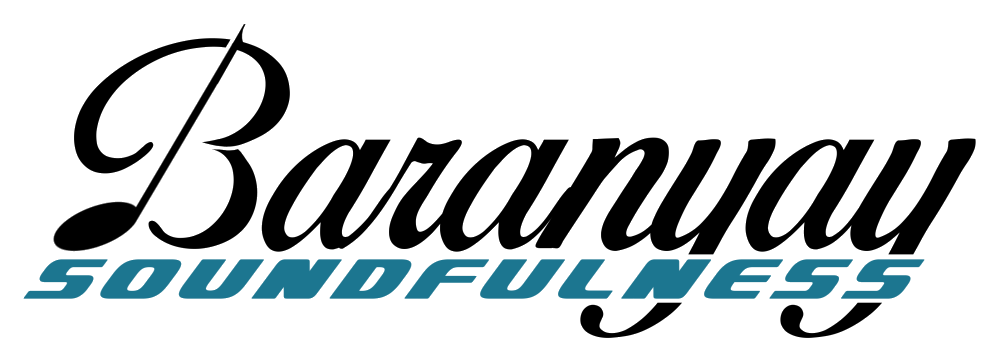Baranyay Soundfulness – methodology
“How we sing is how we breathe, and how we breathe is how we live”
/Lajos Szamosi/
Why is the voice the development tool?
The human voice is the result of the harmony between mental, physical and emotional aspects, which is based on the natural breathing with which we are born. Breathing is an unconditional reflex – that is optimal at the age of infancy or in childhood – meanwhile, producing human sound is a conditioned reflex.
Our speaking comes at the mental level, therefore emotions can be excluded, on the contrary, when we sing, all the three aspects are present, so emotions can not be closed out.
In the human voice, mental and emotional suppressions, and fears manifest on a physical level, which are enlarged by the singing voice. The reason of fears and suppressions are: situations during socialisation, upbringing and stress, which fundamentally influence the voice-producing (for example ethnic origin, family background, social attitudes stemming from belonging to religious or other groups, conscious or unconscious imitation of the voice of parents and ancestors, following patterns, the pressure to comply, the lack of praise, guilt, fear of punishment, fear of being compared, fear of challenges, of defeat, of success, of not becoming famous or, on the contrary, of becoming famous, of traumatic events, and of their effects, etc.). Natural breathing is influenced and limited by these mental and emotional blocks, therefore also the voice based on these will also be limited, the means of human expression is shackled, just as free breathing.
The repressions and fears that we carry throughout our lives limit our free breathing because our bodies are constricted by muscle tensions that act as a conditional reflex. Negative emotions and fears (escaping from a familiar situation or feeling that has previously caused failure) constantly produce stress hormones, thus creating clots and neural pathways, which are further reinforced by any recollection of similar events in the past. Consequently the body becomes more and more tense, the muscles become tenser and tenser, and inhaling and exhaling becomes more and more forced, because the amount of air inhaled into the body, which is being stretched by the muscles, is decreasing. However, the more we interfere with the body’s natural process, the more we restrict and force it to function (breathing is an unconditional reflex). This can lead to a complete loss of authentic, instinctive, flexible functioning (singers often experience a loss of vocal freedom as a result of a trauma and singing with more and more compensation, which can lead to vocal loss). The resonance of the sound is lost in the tensions because there is not enough air in the body to fill the available space and set the resonant cavities in motion. The sound can therefore become artificial, unnatural, even forced, without a power driving it, and the voice production can even become uncomfortable and painful.
By understanding our voice, by understanding what we have changed, why and how we have changed it, we understand ourselves, the patterns we have taken on, and we are liberated mentally, physically and emotionally. So not only our voice, but our whole body, our expression, will flow. The authentic, unstressed sound is the air flowing freely in the body itself, allowing for completely free movement.
Through physical and mental exercises, each person experiences the limitations of their own voice (themselves) and how to break said limitations down, becoming a self-healer.
Our own voice is therefore a tool for complex development – physical, mental and emotional.
Who do we suggest the Soundfulness method for?
PHYSICAL DIMENSION
– to develop the singing and speaking voice
– for performers
– singers – classical and popular music
– actors
– dancers
– (top-level) athletes
– individual and team sports
– martial arts, combat sports
– rowing, kayak, canoe
– shooting
– water polo
– racquet sports
– ball games
– for people working in the field of communication
– media and marketing professionals
– heads of companies
– sales persons
– doctors
– ear, nose and throat specialists, audiologists
– paediatricians
– anyone who wants to breathe and live freely and without tension
What else does it develop?
MENTAL DIMENSION
– Concentration, focus
– in learning
– at work
– in everyday life
– awareness
– being in the moment
– confidence
„Wanting”/desiring versus letting go
– anxiety, block release, depression, hypochondria, etc.
EMOTIONAL DIMENSION
– experiencing and releasing emotions
– releasing fears and anxieties
– releasing childhood traumas, moving past
– balance
– quality of relationships with others (family, co-workers, everyday relationships, co-ordinated or hierarchical relationships)
– relationship with self, self-image
– personal life, peer relationships
– femininity / masculinity / gender roles
– sexuality
